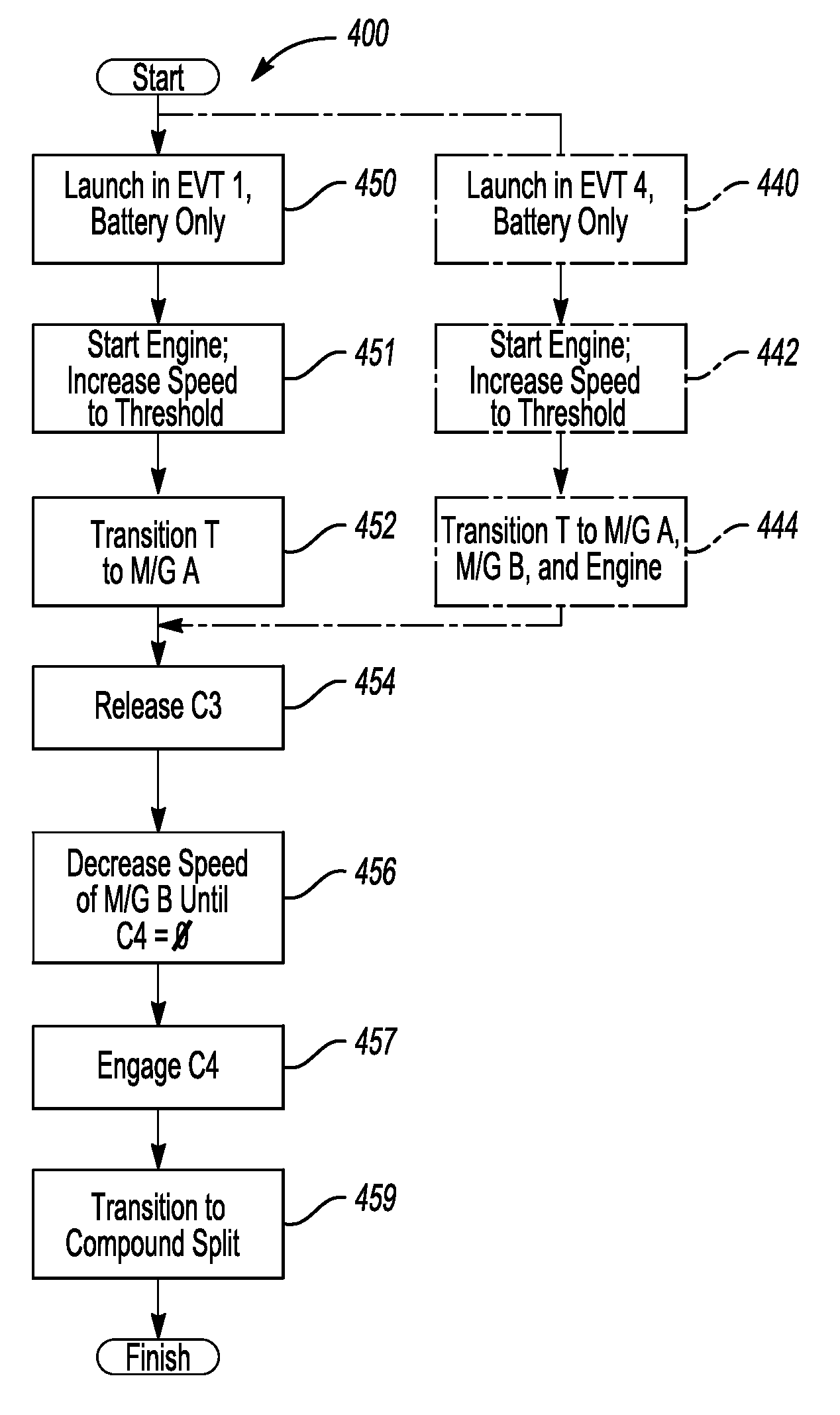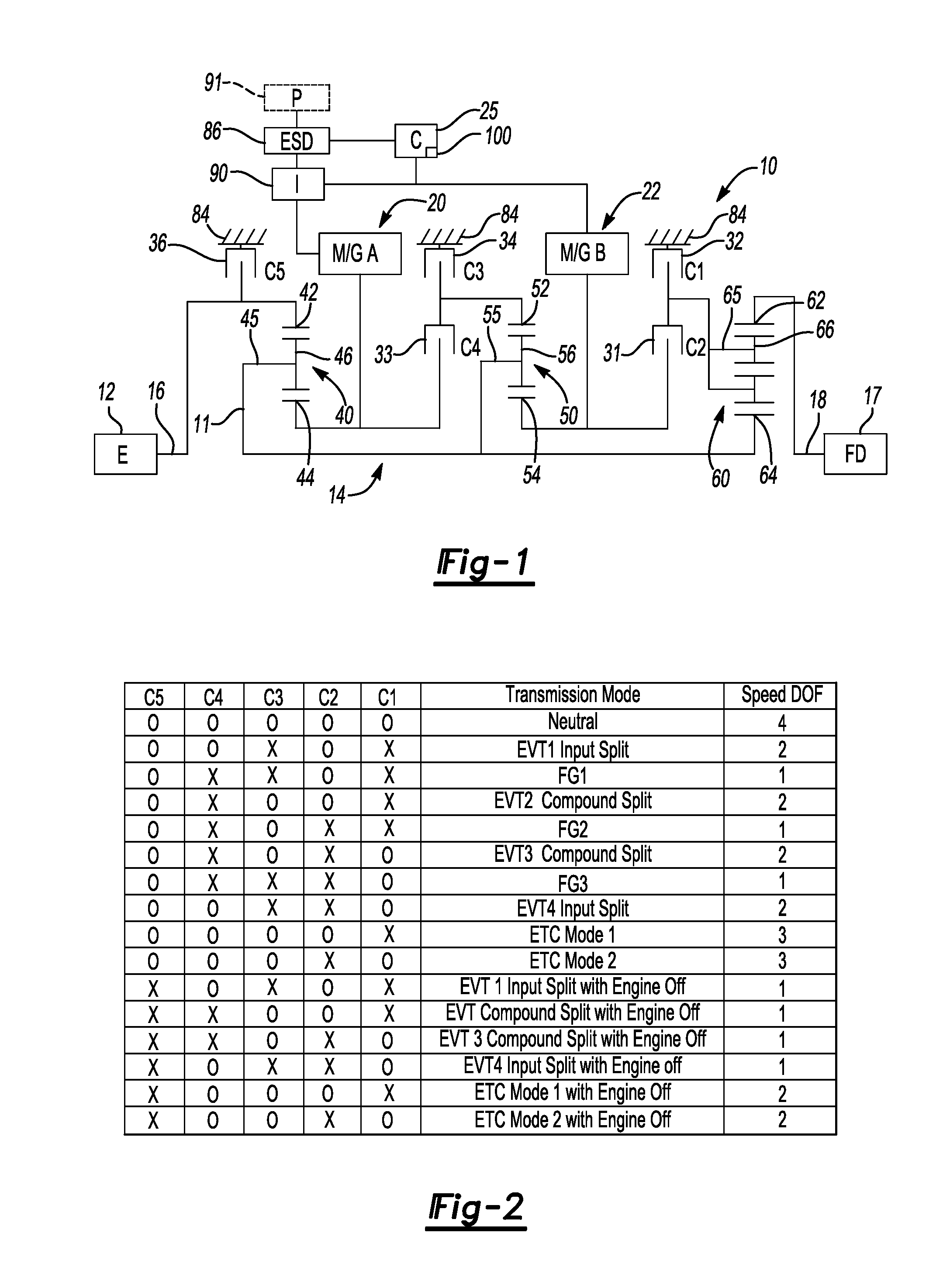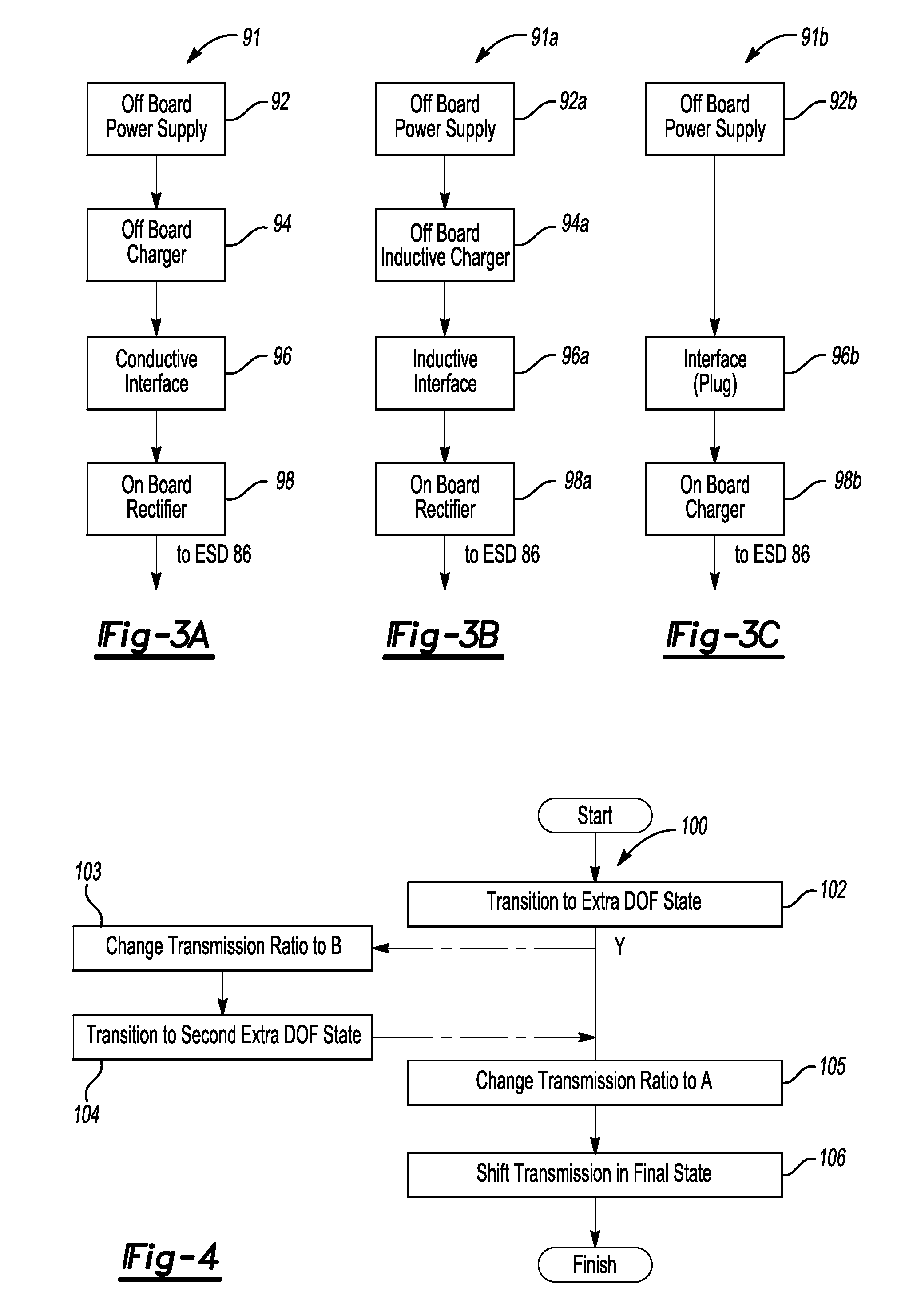Method and apparatus for transitioning an electrically variable transmission
a transmission and electrically variable technology, applied in the direction of analogue processes, instruments, etc., can solve the problems of less than optimal shift time and/or shift efficiency of control strategies for executing shifts or transitions in an evt, and it is not easy to easily control battery power independently of output torque, etc., to achieve constant engine speed, reduce shift time, and improve shift efficiency
- Summary
- Abstract
- Description
- Claims
- Application Information
AI Technical Summary
Benefits of technology
Problems solved by technology
Method used
Image
Examples
Embodiment Construction
[0030]Referring to the drawings, wherein like reference numbers refer to like components, and beginning with FIG. 1, a powertrain 10 derives propulsive energy or power from any or all of an engine 12, a first motor / generator 20 (also labeled M / G A), and a second motor / generator 22 (also labeled M / G B), as well as from an energy storage device or ESD 86, as will be explained below. The engine 12 has an output shaft or member that serves as an input member 16 of an electrically-variable transmission or EVT 14. The EVT 14 is designed to selectively receive a portion of its driving power from the engine 12 in a plurality of its various transmission states or operating modes, which include a pair of electric torque converter (ETC) modes described below, a pair of input split modes, a pair of compound split modes, and a plurality of fixed gear ratio modes, as will be discussed below with reference to FIG. 2. A final drive unit or assembly 17, abbreviated FD in FIG. 1 for simplicity, is op...
PUM
 Login to View More
Login to View More Abstract
Description
Claims
Application Information
 Login to View More
Login to View More - R&D
- Intellectual Property
- Life Sciences
- Materials
- Tech Scout
- Unparalleled Data Quality
- Higher Quality Content
- 60% Fewer Hallucinations
Browse by: Latest US Patents, China's latest patents, Technical Efficacy Thesaurus, Application Domain, Technology Topic, Popular Technical Reports.
© 2025 PatSnap. All rights reserved.Legal|Privacy policy|Modern Slavery Act Transparency Statement|Sitemap|About US| Contact US: help@patsnap.com



